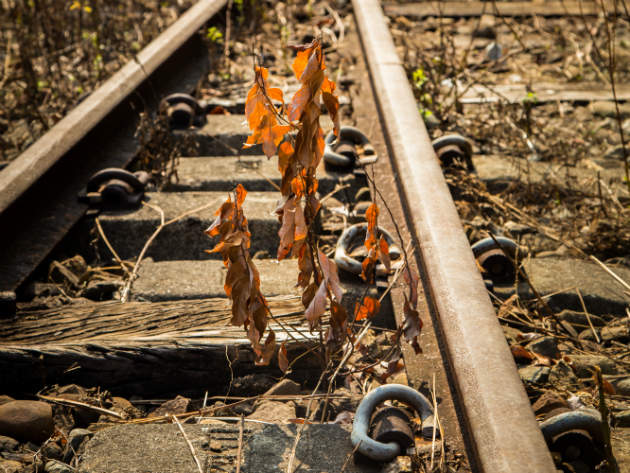
After wet leaves caused chaos on London’s Piccadilly Line in November 2016, TfL has introduced new measures to prevent delays this autumn.
Many Londoners bemoan the dip in sunshine as gloomy autumn descends, but for rail commuters in particular there is a much more real and terrifying threat; falling leaves.
Every year in the capital, huge volumes of wet leaves fall on rail tracks and are crushed together by trains overhead. The resulting mulch causes a loss in adhesion between tracks and wheels, which subsequently lock up when train drivers put on the brakes.
“Unless we are able to improve the rail adhesion, trains have got to slow right down, which will affect the timetable and the amount of trains that can run on the track at the same time,” explains Dave White, Programme Lead for TfL’s Autumn Readiness Programme. “It’s a serious issue, and if you don’t do something about it, it can become dangerous.”
Last autumn, half of the trains running on the London Underground’s Piccadilly Line were removed from the tracks after their wheels were damaged by locking up, causing delays that left passengers fuming.
The leafy onslaught was serious enough that TfL commissioned an independent report into the Piccadilly Line’s disruption during November 2016, identifying a lack of response to adhesion issues as a root cause.
As White explains, the Piccadilly Line’s age and proximity to vegetation makes it particularly vulnerable to autumnal weather. “On the Piccadilly Line, the vegetation and tree management or growth has been exponentially bigger than the last few years.
“Certainly the growth due to changing weather has been a factor, but the trains themselves, being of an older 1973 stock with a standard type braking system and no ability to easily counter low adhesion, are more susceptible [to wet leaves].
Tfl to the rescue
However, this year the transport provider is refusing to let the leaves win, implementing new measures in a bid to prevent trains being stopped in their tracks. Chief amongst these are the introduction of two brand new rail adhesion trains (RAT), designed to dispense special material that will help trains grip onto rails. But how will the RATs work?
“We’ve decided to effectively convert two existing three-car double-ended units by putting what we call sandite equipment into them for our specially trained test crew operators, who will dispense fluid on parts of the line on a specific timetable,” said White.
“Sandite has been used extensively on the Metropolitan and Central lines. We need the metal in it to maintain the signal circuits and ensure there’s no insulation between train wheels and the track, which can affect signalling, and it’s proven to be a very robust way of ensuring adhesion.
In addition to two specialised RATs to cover the length of the line, TfL is not holding back on staff, recruiting additional maintenance employees and erecting new trackside signage to warn drivers about upcoming low-adhesion areas on tracks.
Fighting the leaves at their source
The action plan will also take the fight to leaves at their source, as TfL rolls out what it calls ‘the most intensive trackside vegetation clearance programme to date’.
“We’ve had an increase in our own [trackside] vegetation and tree growth but also what we call third-party tree growth, which is a bit more difficult to cut back because you have to go through councils or private residences,” White says.
“We have standards that cover what we should maintain on the bankside if you like in terms of tree and tree growth. By using these standards, we’re able to ensure we can clear right back to a known position that will have the least effect on the railway, whilst maintaining bankside structures and make sure we don’t destabilise them by removing too many trees.”
Watching the weather
Despite TfL’s best efforts, the unpredictability of the season makes it difficult to say when the next big batch of leaves will strike. Keeping a keen eye on weather information will therefore be vital during the period.
TfL has been using data provided by the Met Office to put together a picture of how the weather will pan out in the first few weeks of autumn. This will allow it to create a bespoke timetable that will tell drivers when and where to slow down to prevent wheel flats (i.e. locked up wheels).
“We’re taking this extra step this year because it makes it easier to manage the railway timetable,” White says. “You introduce slower speeds on certain sections and you get a far more robust response from drivers.”
TfL’s efforts represent a comprehensive step in the rail industry’s war on leaves, but it is far from over. Network Rail is currently investing in train-mounted water jets, while Dutch Railways has trialled a more Star Trek method, fitting leaf-vaporising lasers on its rail vehicles.



